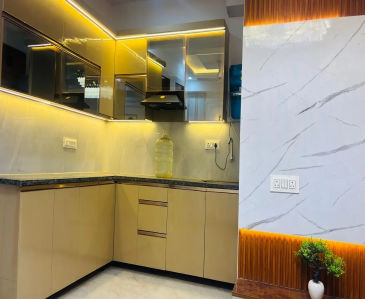Our perception of real estate is being transformed by augmented reality
By Bricksnwall | 2023-11-16

The
chief executive officer of Bhutani Infra, Ashish Bhutani, authored this
article.
Our lives
now revolve around technology, which is a constant state of change. It has
altered not only the way we interact and work but also the way we perceive the
world. Consumers are more open to utilizing cutting-edge technologies to
research goods and services, from real estate to retail. Recent years have seen
a significant transformation in the real estate industry because of the quick
adoption of cutting-edge technologies. Augmented reality, or AR, has carved out
a niche for itself in the 21st-century real estate market among the myriad IT
technologies. Globally, AR has become increasingly popular, and its market
value is predicted to grow at a strong rate of 31.38% CAGR between 2021 and
2027.
By
superimposing digitalized visual, aural, and sensory data over the real world,
augmented reality (AR) technology modifies our understanding of reality. It
serves as a link between the real world and the virtual world, offering a
singular, immersive experience. The way we examine real estate properties has
changed significantly since the introduction of augmented reality.
In the
Indian real estate market today, AR stands out as a transformational force. It
is a spark for interest and participation rather than just a technical
instrument. AR gives real estate players a competitive advantage. With the use
of augmented reality (AR), real estate listings can become more dynamic and
interesting for potential purchasers. They may virtually tour places and
customize their view, which strengthens their bond with the place. Virtual
tours generate almost 40% more hits on real estate listings than just photos
do, which boosts traffic and revenue. Reliability is increased because fewer
in-person visits are required because buyers can view properties remotely.
Virtual tours also increase a property's visibility, bringing in 49% more
quality leads for the property.
Viewing
properties used to be a passive process for purchasers, but it has now evolved
into an engaging one. Buyers explore properties to the fullest, finding hidden
details and imagining their dream rooms. Time is a valuable resource in
today's fast-paced society, and AR excels in this regard. It expedites the
process of finding a property, enabling purchasers to inspect several options
and saving a significant amount of time.
With AR,
users may interact with homes, rearrange furniture or altering aesthetics to
better envision their potential. AR makes the discovery process more effective
by saving time and effort with its remote property touring capabilities. The potential
of AR to deliver a glimpse of a property's finished shape is what makes it
truly magical. Purchasers have the freedom to try out different furniture
configurations, interior designs, and even restorations.
This gives
them the ability to decide quickly and intelligently, which is essential in the
cutthroat economy of today. Moreover, AR gives purchasers complete control over
how they investigate properties. They set the speed and focus of their
excursions, focusing on the places that are most important to them. As a
result, purchaser confidence is raised. According to a survey, a sizable 67% of
respondents think virtual tours are very helpful while looking for a house.
Even though
AR has a lot of potential, the Indian real estate sector presents obstacles.
The widespread adoption of AR is hampered by difficulties linked to limited
resources and accessibility in rural estates. Furthermore, there aren't many
institutions and organizations providing instruction on augmented reality and
the creation of cutting-edge VR and AR technology. The adoption of AR is also
significantly hampered by industry professionals' aversion to change.
Numerous
augmented reality apps and solutions with a variety of features and advantages
are available for the real estate industry. Compared to standard pictures and
descriptions, their 3D property tours provide a more immersive and interesting
experience. By allowing customers to alter the furnishings or the decor, these
tools also assist consumers in interacting with the property and aid in their
visualization.
These apps
not only let buyers take virtual tours of houses, saving them time and effort,
but they also let sellers emphasize the greatest aspects of the property, like
the layout or view, which can draw more attention and traffic. These features
meet the various needs of both buyers and sellers while also improving the
viewing experience of the property.
In the
Indian real estate sector, augmented reality has a bright future. This
cutting-edge technology has the potential to empower, engage, and improve
people, making it a surefire standard in the business. We see a world in which
using augmented reality (AR) to explore properties is commonplace, offering
consumers time-saving, engaging, and immersive experiences. Real estate firms
that completely adopt this technology will have an advantage over their
competitors, providing creative solutions that meet the changing needs of
tech-savvy consumers. Even with enduring obstacles like inaccessibility and
reluctance to change, augmented reality's enormous potential un Indian real
estate is set to completely transform the sector and make it more efficient,
competitive, and customer-focused than it has ever been.
The chief executive officer of Bhutani Infra, Ashish Bhutani, authored this article.




